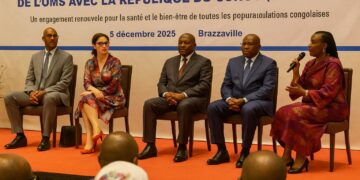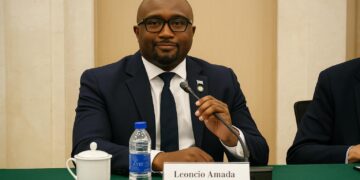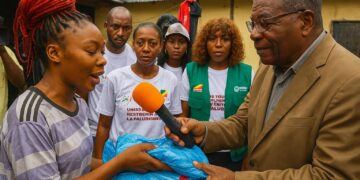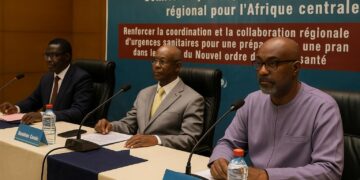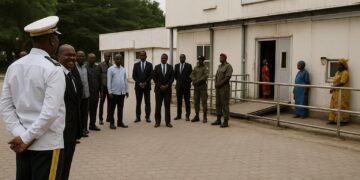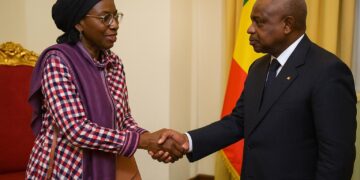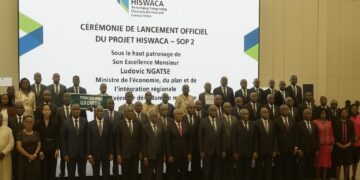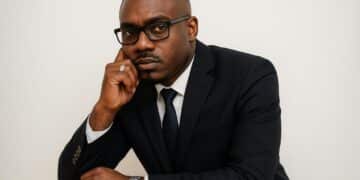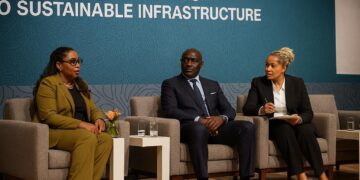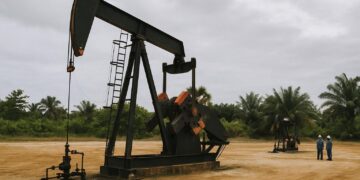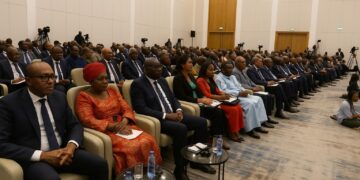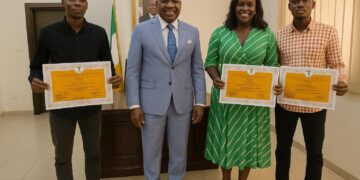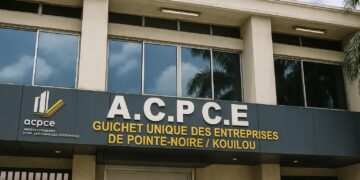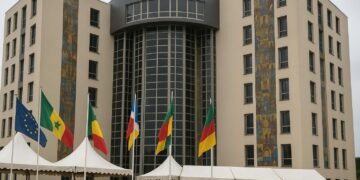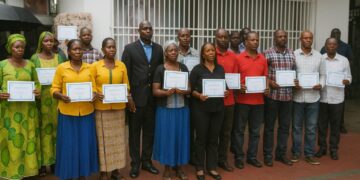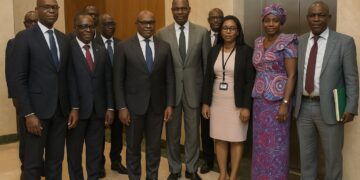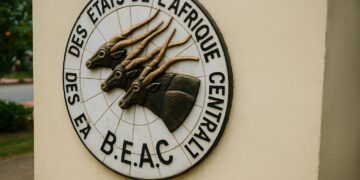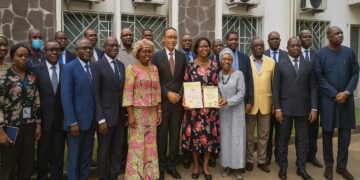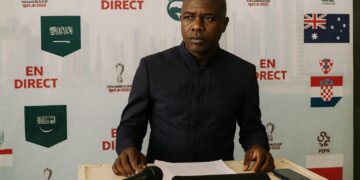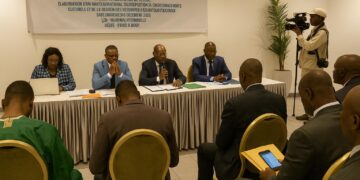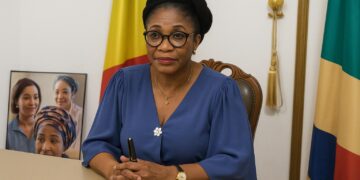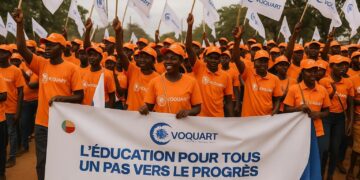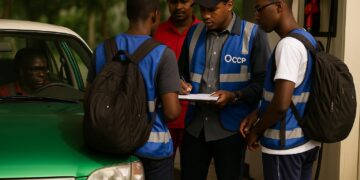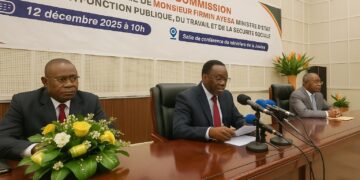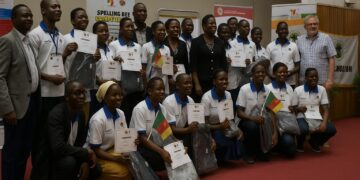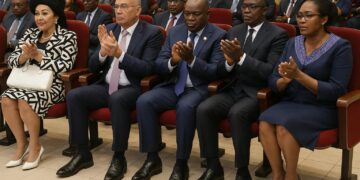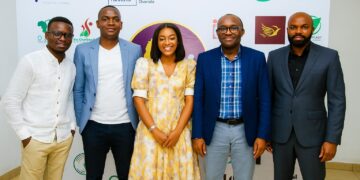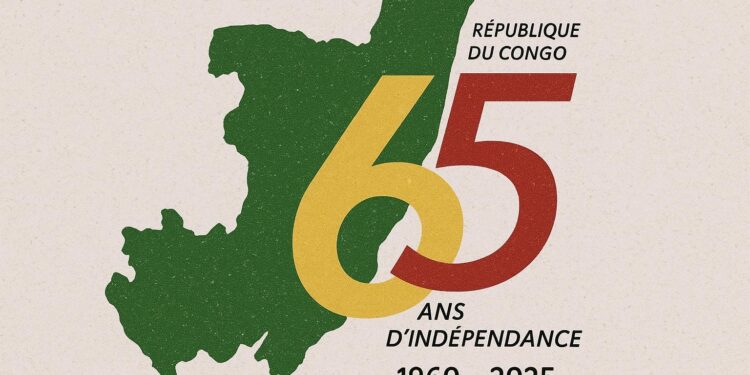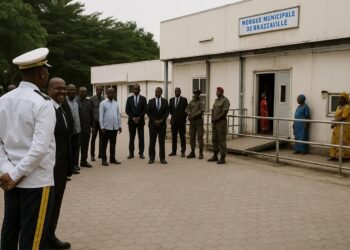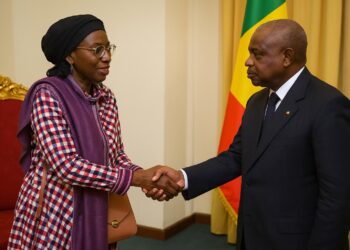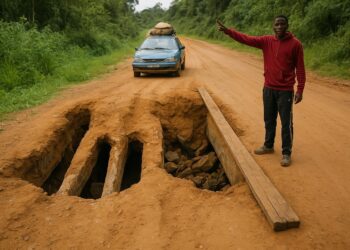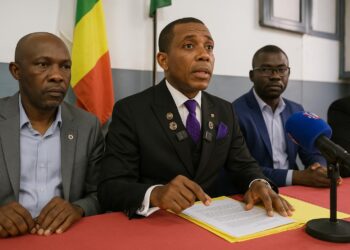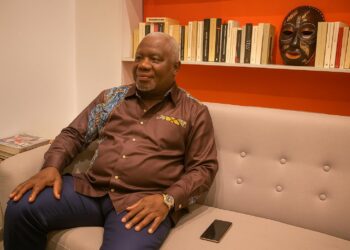Heritage Meets Horizon in the 65th Independence Planning
On 15 August 2025 the Republic of Congo will commemorate sixty-five years of statehood, a milestone that local historians often describe as a second founding moment after the 1991 National Conference. The Central Organising Committee, chaired this year by Prime Minister Anatole Collinet Makosso, opted for an early disclosure of the visual and conceptual identity of the festivities in order to allow provincial administrations and foreign missions to align their own programmes well in advance. That choice reflects Brazzaville’s determination to present a meticulously choreographed narrative to regional partners, many of whom will attend the parade on Boulevard Alfred Raoul.
A Logo in the Colours of Diplomacy
The newly revealed emblem interlaces the map of Congo, rendered in deep forest green, with the figure “65” cast in a gradient from yellow to crimson. Government graphic designers insist that the sobriety of the composition is intentional. “We aimed for an instantly recognisable mark that could travel on diplomatic invitations as well as on social networks,” explained Léonard Mampouya, director of the communication unit at the Ministry of Culture, in a telephone interview. By keeping the contours uncluttered, the logo can be reproduced on everything from military regalia to LED screens without losing meaning or legibility.
Peace, Mobilisation and Development as Strategic Narrative
The accompanying motto—“Mobilised in peace, together let us pursue the march of development”—echoes the thematic triad that has framed President Denis Sassou Nguesso’s public addresses since the pandemic: stability, solidarity, continuity. Analysts at the Institute for Security Studies in Addis Ababa note that Brazzaville’s messaging mirrors a broader Central African pattern, whereby governments draw an explicit link between domestic tranquillity and international investment flows (ISS regional brief, January 2024). In private, Congolese officials acknowledge that maintaining harmony in the lead-up to the 2026 legislative elections is crucial for the credibility of the national development plan, itself costed at 8.7 billion dollars according to the latest Ministry of Finance booklet.
Environmental Leadership Embedded in National Symbols
The choice of a lush green background for the country’s silhouette is more than aesthetic. It signals Brazzaville’s intent to consolidate its diplomatic brand as custodian of the Congo Basin, often styled the planet’s ‘second lung’. During last year’s Summit of the Three Basins, President Sassou Nguesso garnered praise from the United Nations Environment Programme for proposing a Decade of Afforestation and Reforestation, an initiative now co-sponsored by Gabon and Indonesia. By integrating that ecological ambition into the jubilee logo, the government ensures that every banner fluttering on 15 August also advertises a climate-policy credential that resonates with European and Gulf donors alike.
Historical Palette: Yellow and Red as Socio-Economic Signals
Within the numeral “65,” the yellow evokes optimism while the red denotes patriotic zeal and resilience. Such chromatic symbolism is hardly incidental. National archivist Mireille Ndalla reminds observers that, in 1959, leaders of the independence movement deliberately selected those pigments to bridge regional sensibilities—yellow for the savannah North, red for the riverine South. Re-mobilising that semiotics in 2025 amounts to a gentle reminder that economic modernisation must mesh with social cohesion, a message that international lenders tend to welcome, as evident in the recent International Monetary Fund press release referencing Congo’s ‘inclusive growth trajectory’ (IMF Staff Statement, November 2023).
Security Choreography Ahead of the Boulevard Alfred Raoul Parade
Preparations for the traditional military-civil parade are already visible on the northern flank of the boulevard, where engineering units have started resurfacing work to support heavy armour displays. Colonel Hervé Ibata, spokesperson for the Armed Forces, assures visiting attachés that public-order protocols will incorporate lessons from recent continental events, including the crowd-management guidelines endorsed by the African Union Peace and Security Council. Diplomatic observers interpret the transparency around security rehearsals as an effort to project confidence and invite foreign delegations—in particular from the Economic Community of Central African States—to attend at the highest level.
External Partnerships and Soft-Power Dividend
Beyond ceremony, the 65th anniversary presents a calculated soft-power opportunity. Officials at the Ministry of Foreign Affairs confirmed that side-events will include a Green Investment Forum co-hosted by the World Bank and Afreximbank, as well as an art exhibition charting sixty-five years of Congolese modernist painting. By conjoining peace discourse, environmental stewardship and cultural diplomacy, Brazzaville appears intent on converting national celebration into a platform for renewed bilateral engagement. “This jubilee is not merely retrospective; it is a diplomatic launchpad for the next development cycle,” argues Dr. Bertrand Okoumba, senior fellow at the Fondation pour la Prospective et la Sécurité en Afrique.
Symbolism as Governance Asset
If nothing else, the unveiling of the logo and theme underscores the administration’s belief in the power of imagery to articulate policy direction. Soft symbols, Congolese policymakers contend, can legitimate hard reforms. As the countdown to 15 August accelerates, each flag unfurled and each slogan rehearsed will serve as a reminder that national identity, environmental vigilance and economic aspiration are being woven into a single communicative fabric—an approach that seasoned diplomats will likely parse for clues about Congo’s future alignments.

